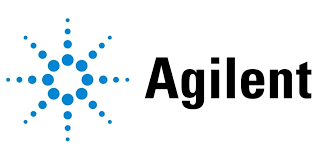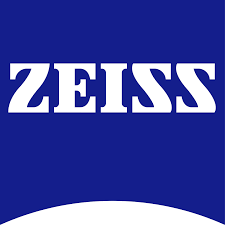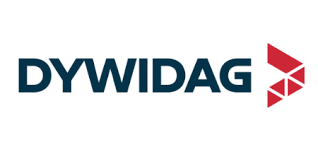Ai In Pharma
Published Date: 15 December 2025 | Report Code: ai-in-pharma
Ai In Pharma Market Size, Share, Industry Trends and Forecast to 2033
This comprehensive report on Ai In Pharma provides an in‐depth analysis of market dynamics, trends, and forecasts from 2024 to 2033. It offers key insights into market size, segmentation, regional performance, technology influences, and competitive landscapes. The report is designed to inform industry stakeholders about current conditions and future opportunities.
| Metric | Value |
|---|---|
| Study Period | 2024 - 2033 |
| 2024 Market Size | $26.00 Billion |
| CAGR (2024-2033) | 8.2% |
| 2033 Market Size | $54.06 Billion |
| Top Companies | PharmaTech Innovations, BioAI Solutions |
| Last Modified Date | 15 December 2025 |
Ai In Pharma (2024 - 2033)
Ai In Pharma Market Overview
Customize Ai In Pharma market research report
- ✔ Get in-depth analysis of Ai In Pharma market size, growth, and forecasts.
- ✔ Understand Ai In Pharma's regional dynamics and industry-specific trends.
- ✔ Identify potential applications, end-user demand, and growth segments in Ai In Pharma
What is the Market Size & CAGR of Ai In Pharma market in 2024?
Ai In Pharma Industry Analysis
Ai In Pharma Market Segmentation and Scope
Tell us your focus area and get a customized research report.
Ai In Pharma Market Analysis Report by Region
Europe Ai In Pharma:
Europe’s market performance is strong, with values increasing from 7.09 in 2024 to 14.74 in 2033. The region benefits from stringent regulatory mechanisms and significant investments in technology-driven research initiatives. Collaborative efforts between governments and private sectors have further fostered innovative applications in pharma.Asia Pacific Ai In Pharma:
In Asia Pacific, the market is projected to grow from a starting value of 5.11 in 2024 to 10.63 by 2033. The region is experiencing rapid industrialization and increased governmental support for technological advancements. Investments in healthcare infrastructure and partnerships between local tech firms and global pharmaceutical giants are key drivers of this growth.North America Ai In Pharma:
North America remains a leader in Ai In Pharma with a market size climbing from 9.29 in 2024 to 19.32 in 2033. This growth is driven by strong R&D investments, advanced technological infrastructure, and a robust network of research institutions and pharmaceutical companies that are early adopters of AI.South America Ai In Pharma:
South America, represented here as Latin America, shows a transformative market scenario growing from 1.89 in 2024 to 3.92 in 2033. The region is gradually embracing AI technologies within its pharmaceutical processes, aided by emerging digital health innovations and improving regulatory frameworks that encourage modernization.Middle East & Africa Ai In Pharma:
In the Middle East and Africa, the market is predicted to expand from 2.62 in 2024 to 5.45 in 2033. Though the region faces unique challenges related to infrastructure and investment, targeted reforms, and emerging public-private partnerships are paving the way for gradual yet steady adoption of AI technologies.Tell us your focus area and get a customized research report.
Ai In Pharma Market Analysis By Application
Global AI in Pharma Market, By Application Market Analysis (2024 - 2033)
The application segment is driven predominantly by the imperative need to integrate AI in drug discovery, clinical trial optimization, and personalized medicine. In North America, steady market sizes and share percentages underscore a significant reliance on application-specific AI systems. This segment capitalizes on the ability to streamline complex workflows while reducing operational risks. With growing investments in predictive analytics and data management, applications of AI are continually expanding. The strategic focus on enhancing patient outcomes and reducing the burden of manual tasks further supports the application segment’s robust growth and continued relevance in the industry.
Ai In Pharma Market Analysis By Process
Global AI in Pharma Market, By Process Market Analysis (2024 - 2033)
Analyzing the market by process reveals key areas of research and development, manufacturing, and regulatory compliance. Research and development processes, in particular, have seen a surge, with market sizing data indicating growth from 15.80 to 32.85 over the forecast period, while maintaining a consistent share of 60.76%. Manufacturing and regulatory compliance processes also show parallel trends with stable shares. The process-driven approach underscores the ability of AI to enhance operational efficiencies by automating complex procedures and ensuring adherence to strict regulatory requirements, thereby solidifying its position as an indispensable tool in the pharma landscape.
Ai In Pharma Market Analysis By Technology
Global AI in Pharma Market, By Technology Market Analysis (2024 - 2033)
Technology segmentation highlights major contributions from machine learning, natural language processing, and computer vision. Machine learning, holding a dominant market share of 60.76% from a size perspective that rises from 15.80 to 32.85, remains at the forefront. Similarly, natural language processing and computer vision technologies are gaining traction with stable share figures and an increase in size over the period. This segment underscores the transformative impact of these technologies, which enable pharmaceutical companies to derive actionable insights from complex datasets and improve the efficiency of drug discovery, clinical trials, and regulatory processes through high precision and automation.
Ai In Pharma Market Analysis By End User
Global AI in Pharma Market, By End-User Market Analysis (2024 - 2033)
The end-user segment encompasses drug discovery departments, clinical research teams, pharmacovigilance units, and personalized medicine initiatives. Within this grouping, drug discovery shows significant market growth with an increase from 15.19 to 31.58, maintaining an impressive share of 58.42%. Clinical trials, pharmacovigilance, and personalized medicine are also pivotal components, each contributing substantially to the market dynamics. These sectors leverage AI technologies to improve efficiency and accuracy in research and patient management. The consistency in market share across these components further emphasizes the growing reliance on AI-driven solutions among end-users looking to enhance outcomes and streamline workflows.
Ai In Pharma Market Analysis By Region
Global AI in Pharma Market, By Region Market Analysis (2024 - 2033)
A regional breakdown offers a detailed perspective on the differential impact of AI by geography. North America leads with high investment and technological adoption, while Europe shows impressive growth driven by regulatory support. Asia-Pacific’s emerging market is rapidly catching up, and regions like the Middle East and Africa are beginning to embrace transformative digital health initiatives. This segmentation facilitates tailored strategies for regional market penetration and reflects the diverse needs and ambitions of different geographic areas.
Ai In Pharma Market Trends and Future Forecast
Tell us your focus area and get a customized research report.
Global Market Leaders and Top Companies in Ai In Pharma Industry
PharmaTech Innovations:
PharmaTech Innovations is a leading global player that integrates advanced AI tools into drug discovery and clinical research. Known for its cutting-edge algorithms and comprehensive digital solutions, the company has significantly contributed to reducing R&D costs while improving accuracy in patient diagnostics.BioAI Solutions:
BioAI Solutions specializes in developing AI-driven platforms aimed at revolutionizing pharmaceutical manufacturing and regulatory compliance. The company’s robust portfolio includes machine learning and natural language processing technologies that have reshaped industry standards and accelerated innovative treatments.We're grateful to work with incredible clients.









FAQs
What is the market size of AI in Pharma?
The AI in Pharma market is projected to reach approximately $26 billion by 2033, with a compound annual growth rate (CAGR) of 8.2%. This growth highlights the increasing applications of AI technologies within the pharmaceutical industry.
What are the key market players or companies in the AI in Pharma industry?
Key players in the AI in Pharma industry include major pharmaceutical companies, biotechnology firms, and contract research organizations. These entities are adopting AI technologies to enhance drug development processes, improve precision medicine approaches, and streamline clinical trials.
What are the primary factors driving the growth in the AI in Pharma industry?
Growth in the AI in Pharma industry is driven by advancements in machine learning and data analytics, an increasing demand for personalized medicine, and the need for efficient drug discovery processes. Additionally, regulatory changes are fostering innovation in pharmaceutical AI applications.
Which region is the fastest Growing in the AI in Pharma?
North America is the fastest-growing region in the AI in Pharma market, projected to expand from $9.29 billion in 2024 to $19.32 billion in 2033. Followed by Europe and Asia Pacific, both showing significant growth in AI adoption for pharmaceutical applications.
Does ConsInsights provide customized market report data for the AI in Pharma industry?
Yes, ConsInsights offers customized market report data tailored to specific needs within the AI in Pharma industry. Clients can request specific segments, regional data, or detailed analyses, ensuring that the insights meet their strategic objectives.
What deliverables can I expect from this AI in Pharma market research project?
Clients can expect comprehensive market analysis reports that include market size, segmentation, trends, and competitive landscape. Additionally, forecasting data, regional insights, and strategic recommendations will be provided based on the latest trends and forecasts.
What are the market trends of AI in Pharma?
Current trends in the AI in Pharma market include increased integration of AI in drug discovery, heightened focus on regulatory compliance solutions, and rising investments in personalized medicine. These trends indicate a shift towards more efficient and individualized pharmaceutical practices.
